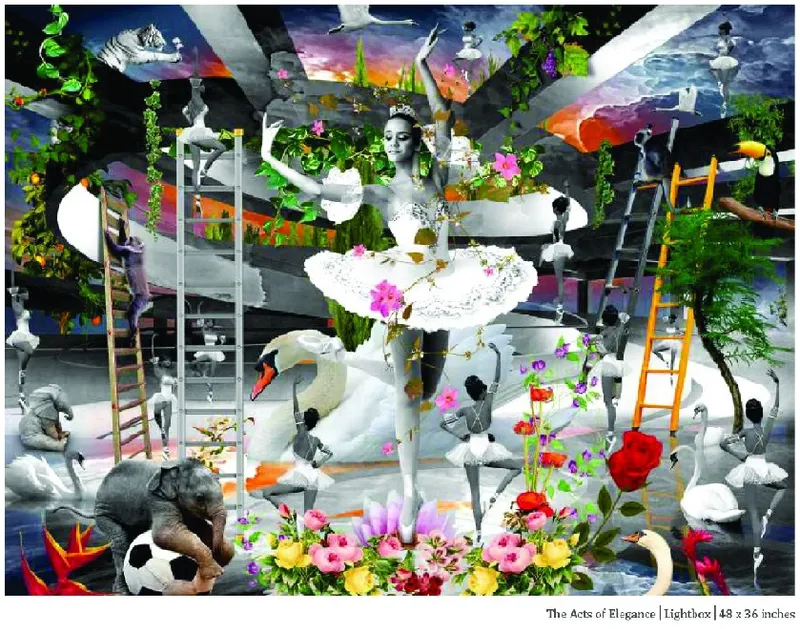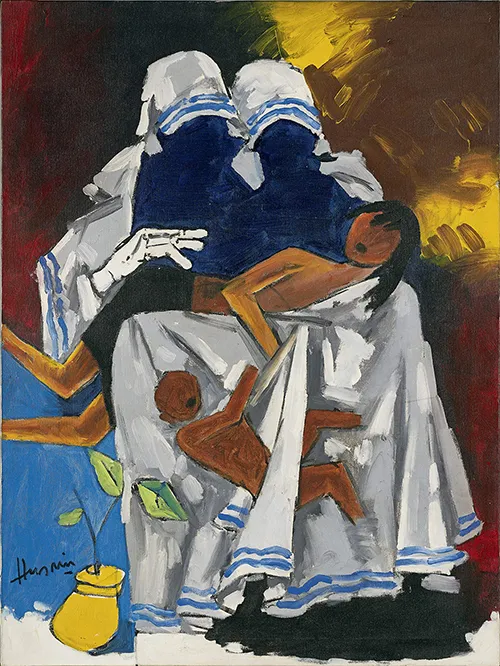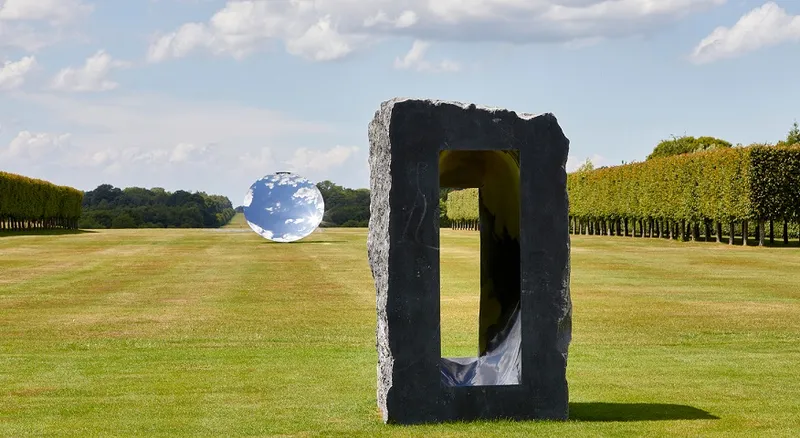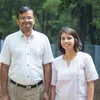Understanding the many worlds of art and genres
Curator Sanjana Shah charts the landscape of art and prominent Indian artists who have made their mark.
The art world is a continuously expanding phenomenon fuelled by creativity. Creativity is inherently unpredictable and forever evolving — through constant experimentation and engagement, the artist keeps finding new ways to give a voice to their creative expression.
Hence, today, on the contemporary landscape of Indian art, there exista so many varying and fascinating genres. Some have existed since time immemorial, and some are new inventions…often accidental!
I meet so many artists whose mediums were something they just chanced upon while experimenting with different tools in their studio. Even how an artist views the world is constantly being shaped by personal experiences coupled with the collective context of external dynamics. Creativity is truly subjective and untamable!

The Acts of Elegance (Lightbox), by Ranbir Kaleka
Image courtesy of the artist and Tao Art Gallery
However, to understand and appreciate art better, it is necessary to segregate and compartmentalise the general areas and genres that exist. These are modern or contemporary, abstract or figurative, conceptual, digital or performance art. While it is more layered and complex than this, these basic terms are invaluable in the art industry as they help evaluate and curate better.
The idea of modern and contemporary takes its inspiration from the fact that art is ever-changing. The timeline in the West put the beginning of modern art to the late 1800s when there was a radical shift from the typical realistic art of the renaissance to more innovative ways of seeing.
Contemporary art was another shift from modern in the late 1900s and started as a movement away from the content and focused more on making the artwork. However, contemporary art is ongoing even today and refers to any art inspired by the present.

Ellipsis, by Jitish Kallat
Image courtesy of the artist
In India, our modern masters included household names like MF Husain and SH Raza. Since the past decade, Indian art has entered its truly contemporary phase, with artists experimenting more with the process, ideas, and mediums than typical traditional visuals. Reigning names like Jitish Kallat and Atul Dodiya show you that art is genuinely now about the artist's mind and not just the end product.
One legendary name that triggered this shift into contemporary was Marcel Duchamp. Duchamp’s famous ‘Fountain’ piece, a literal men’s urinal, ultimately challenged the existing narrative at the time of what constituted true art. Through this work, he intended to move the focus from physical craft to intellectual interpretation.
The next layer of distinction is Abstract versus Figurative. These terms are pretty self-explanatory in that abstract is any art that doesn’t directly show you a particular understandable reality but needs to be interpreted. In contrast, figurative is more precise and narrative in style. Modern art tends to tilt towards the reliable figurative style, while abstract is the ambiguous ally of Contemporary art.

Untitled, by MF Husain. Mother Teresa Series
Image Courtesy of AstaGuru
Jackson Pollock is an important name to consider when viewing the turning point from figurative to abstract. His canvases consisted more of his process of imprinting his physical self abstractly upon it rather than creating a specific image.
Apart from the difference in time and style, modern and contemporary art also encapsulate many different movements and forms like post-impressionism, surrealism, pop art, and dadaism under its umbrella.
Installation, public, performance, conceptual, and now increasingly, digital art, are all segments under the contemporary umbrella.
Every artist finds a way to re-invent the narrative and keep the wheel turning. This expansion in creativity leads to the continuous generation of more and more genres. Installation art is any 3D sculpture or physical piece that is external and not the conventional canvas painting style. Installation and public art are usually site-specific and designed with the intent of combining space with art.
Performance art has no tangible and permanent art ‘piece’. Like theatre, it is an experience that the audience has, and the artist facilitates to trigger engagement and explore ideas. Digital or conceptual art is again intangible physically but has value in the larger concept and meaning it captures. NFTs are a prime example of this value of trademarking and exclusivity in ownership of creation.
Some artists work only in specific genres, while others combine a few in order to create perception-challenging variations. Ranbir Kaleka is a well-known Indian artist who works with photography, painting, and digital art to create some beautifully surreal pieces! Another iconic name is Anish Kapoor, who completely transformed the conceptual and installation art space through his highly contemporary take.

Untitled, by Anish Kapoor
Courtesy the artist and Lisson Gallery
While all these terms and movements are essential in defining art history and simplifying art appreciation, they are in no way written in stone. The very nature of art is to be ambiguous and open to interpretation.
Artists want audiences to imprint upon their artworks and take away something unique and subjective each time. There is a reason why one can keep going into the Tate Modern and staring into the vast expanses of Rothko’s Seagram murals.
Art is ever-changing and alive, each piece constituting a different mood and providing a much-needed escape from the stifling reality of our world. The genres are all fluid and interchangeable and take inspiration and the mantle on from each other.
(Disclaimer: The views and opinions expressed in this article are those of the author and do not necessarily reflect the views of YourStory.)









